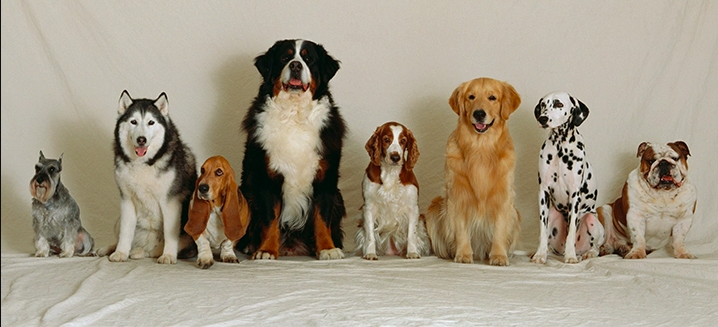Some dogs can learn from each other and from humans. Some are so independent they cannot!
There is an amazing variety of dog breeds. The American Kennel Club (AKC) currently registers 200 dog breeds and worldwide, the Fédération Cynologique Internationale (FCI), officially recognizes 360 breeds. FCI also known as the International Canine Federation, is the largest international federation of kennel clubs with members, associates and partners in 98 countries

It is not surprising that most people are familiar with the mindboggling variability of dog breeds that differ not only in their appearance, but also in their behavior. It’s only natural to speculate that terriers would behave differently than Huskies, Border Collies would show different preferences than pointers, and so on.
There are numerous experiments in which ethologists found considerable differences among the various breeds. But social learning, which is the capacity for learning through observation of someone else’s actions, remained an interesting exception, until now. Although dogs are well known for their excellent ability to learn from other dogs, and more importantly, from humans, this significant feature remained stubbornly independent of their breed through more than two decades of investigations.
A new study published in the journal Animals, the researchers of the Department of Ethology, at Eötvös Loránd University showed that some dog breeds seem to be more honed towards human behavior than others, which helps them to improve their performance in an otherwise difficult spatial problem-solving task: to detour around an obstacle.
The Study
Researchers utilized the idea of sorting dog breeds into two functional groups: those who were selected for cooperatively working with their human handlers (such as herding dogs, pointers, retrievers); and those who mainly work without constant human guidance—the independent working dogs (such as terriers, sighthounds, spitz type breeds and livestock guarding dogs).
Approximately 100 dogs were tested with the well-known “V-shaped fence detour” test. Dogs had to find the reward behind the transparent wire-mesh fence, which is a hard task, as many dogs cannot perform the required detour within one minute, which is the standard duration of a trial.
Dogs were tested in three consecutive trials, either without any further help (control group); or after watching a human walk around the fence, demonstrating how to make a detour, before the second and third trials.
Results
Upon review of the results, it turned out that the independent and cooperative breeds were equally unsuccessful in the control condition, which was not a surprising result, regarding how hard is the detour task for dogs in general.
However, it turned out that when additional assistance was provided in the form of watching the helpful demonstrator, cooperative working dog breeds were in clear advantage.
Unlike their independently working cousins, cooperative dogs performed faster subsequent detours compared to their baseline  trial. Independent dogs on the other hand, did not speed up their detours, even though they were also provided with the same demonstration of walking around the fence.
trial. Independent dogs on the other hand, did not speed up their detours, even though they were also provided with the same demonstration of walking around the fence.
“The beauty of this finding lays in the fact that we did not find any specific dog breed to be especially talented in social learning,” said researcher Dr Pongrácz, supervisor of the research program. “The groups we assembled for the tests consisted of several unrelated dog breeds, positioned at distant branches on the genetic ‘tree’ of dogs, thus our results highlight the role of functional breed selection that has possibly been aimed at those capacities in dogs that enhance attention and interest towards human behavior.”
Next Steps
The researchers concluded the discussion with a remark regarding their future plans. “We won’t stop here of course. There are so many things still to discover, for example, whether the cooperative and independent dogs would equally regard our attention calling words interesting, or would we find the cooperative breeds as being more attracted to human encouragement?”
[Link]
